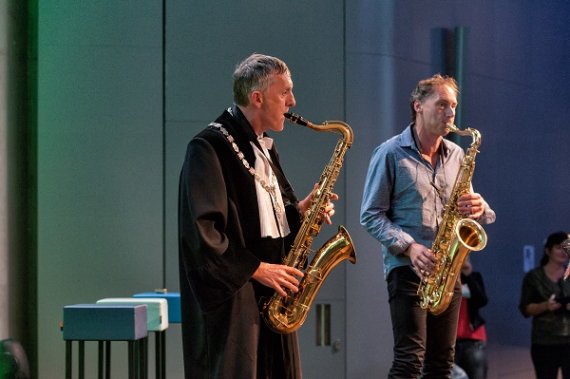The theme of the opening was ‘disruptive thinking’, or new and surprising takes on things. The main speaker was designer Daan Roosegaarde, the brain behind such innovations as solar-powered illuminated cycle paths and an urban smog vacuum cleaner. But all Roosegaarde really did was show his portfolio of successful products, which didn’t really tell us anything about how he developed his innovations or the art of disruptive thinking.So how do you arrive at and develop new insights and products which go against the grain? Gerlinde de Deijn did say something about this. A soil scientist, she embarked on a collaboration with photographer Wim van Egmond to study soil life. That collaboration came about because of a casual conversation about what she was working on with a colleague who then put her in touch with the photographer. ‘So talk to each other and ask colleagues for advice; they’ll be very willing to help you,’ was her advice to the audience in Orion. The importance of meeting with people who see things differently or come from another world was refl ected in landscape architect Paul Roncken’s story too. In his design he links landscape with machinery, he explained with reference to the design of a Zeeland polder with ponds for fish production. Roncken envisaged such encounters in Wageningen education too, in the form of a university college in which students study a mix of all the Wageningen disciplines. This was disruptive thinking in its purest form since a university college of that kind would turn the carefully constructed Wageningen education model upside down and seek to approach the choice of courses from a new starting point. It is also disruptive because Roncken’s proposal is not readymade and attracts a lot of ‘yes but’ questions about its feasibility and implications. And it is precisely those ‘yes but’ questions that irritate Roosegaarde, we understood from his presentation, but which also make clear that the proposal could have disruptive or disadvantages sides to it. All in all, the occasion was an exploration of new meetings of minds, and ways of colouring outside the lines or thinking out of the box. And rector Arthur Mol did his own out-of-the-box bit by opening the academic year on his saxophone.
Foto: Guy Ackermans

